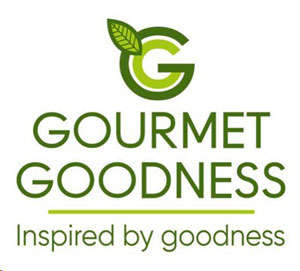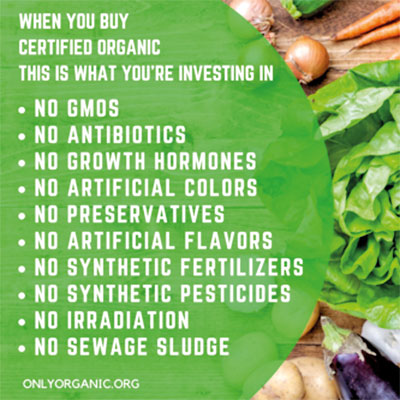Branding Organic Vs Non-organic products
View(s):This topic would bring bitter memories and experiences to Sri Lankan consumers who want to consume organic food. The simple reason is that there would have been many instances where you would have ended up buying non-organic products paying a premium which later would have left the doubt in your mind if it was truly organic or not. You would also have noticed that most of the organic products we buy are not the same size as non-organic ones or are not so colourful or vibrant. Surprisingly in ancient history, Sri Lankans knew how to grow much bigger fruits and plants that were 200% organic. The crop or the harvest of organic is supposedly lower than the non-organic cultivation.
The reason for this change is scientific and it’s something to do with the molecules which would take fertiliser through the roots of any tree for it to grow. Though Sri Lanka was known as the ‘Granary of the East’ (Pera-diga dhanyagaaraya) in the recent past, the country has not been able to produce what’s required for the local market consumption. Despite several reasons which caused this downfall in the crop it’s interesting to see how it can work in today’s context and where and how our people have gone wrong. When it comes to branding organic products there is a tried and tested method to follow but as we know, rarely do we find local manufacturers and brand makers following this rule of thumb.
Why growing organic is difficult?
In the ancient history of Sri Lanka, it’s well known that we produce a surplus of grain and paddy so that we could export it to other countries. The historic evidence still vouches for the fact that we could produce a surplus without using chemicals and fertilisers. This was made possible by the traditional methods employed by the local farmers which were more in the shape of tacit knowledge that was passed through from one generation to another. In addition to that, one of the major factors which was contributing to this success was that our soil was not at all exposed to chemicals and fertilisers until the point they were introduced to Sri Lanka. The British are accused of introducing chemicals and fertilisers to Sri Lanka which was supposed to be used by farmers leaving aside the traditional methods which were followed through generations. The British administration ordered to cut down Mee (Madhuca longifolia or in India it’s known as the Butter Tree) Trees which were commonly found next to paddy fields and were one of the major sources of natural fertilisers which helped the farmers. After cutting down them, the British took steps to widespread the usage of chemical fertilizers including weedicides and pesticides which became an essential item in farming. However according to the theory of population,inorder to cater to the ever-growing population of the world, it’s a must to use chemical fertilisers.
In the recent past, there was a boom in organic fresh products however it was not based on the true scientific reasons which could lead us to do well with organic agriculture. One of the main impediments to organic agriculture was the soil condition which was having the effect of chemical fertiliser in it over the last few centuries. Therefore, the crying hour of the need was to figure out a mechanism to bring back the molecules which were no longer in our soil due to the impact of chemical fertiliser. The scientist who figured out the way of bringing them back also lost their way as it was not properly communicated or established to convince the administration. As a result of that, we lost a golden opportunity to convert a portion of our agriculture (Originally the target was to convert 30% of the country’s agriculture into organic which later for no reason was ordered to be 100% organic) into organic which would have opened up many affluents markets in the world for our products and crops.
The recent boom in organic products and brands in Sri Lanka
Starting with organic virgin coconut oil, organic tea, and organic rice the organic boom was embraced by local manufacturers and brand makers over the last decade or so opening many avenues for Sri Lankan farmers and manufacturers to earn an extra income by selling organic products in the exports market. However, some of the companies which knew the art of branding organic products could win the overseas markets despite many barriers that they were confronted with. For example, organic tea, and organic virgin coconut oil were produced by many local companies focusing on export markets. The certification requirements for such products were imposed by the regions in the world such as FDA by the United States of America, EU Organic by the countries in the European region, and JAS by Japan, etc. One of the unforgivable mistakes done by the local manufacturers was to brand non-organic products as organic products. Obtaining certifications for those who throw money wasn’t that hard in the local context but when the products land in certain overseas markets, they had testing mechanisms in place to see if it was truly organic or not. Certain brands which exported products as organic which were not organic had to pay the price for their mistakes by calling back all their shipments. At the same time, there was a boom in the organic products in the world market which attracted genuine producers of organic products too.
Organic products unless stated in the label are hard to be recognised in the market when they are on the shelf. The only relief for consumers was that they could always see the organic certifications that were issued by relevant authorities. None of these could help the local manufacturers and marketers of organic products to win the market. Therefore, it’s easy to look at certain elements of the marketing mix to see what could be done right in terms of selling truly organic products in the market.
Price – One of the main factors of the marketing mix for an organic brand is to command a higher price when compared to non-organic products as it’s not easy to produce organic products due to the reasons mentioned above. Therefore, the brand which manufactures truly organic products needs to set a higher price than the market average as there are many other competitors.
Distribution – Probably organic products will not be available door-to-door as there is a limited supply. However, the brands/ companies can make things happen by getting them produced or packed by third-party suppliers.
Product – The product needs to carry all the certifications that the product is authorized to carry and as they are food products it’s a must to mention the nutritious content per serving on the label. This applies regardless of if the product is organic or non-organic if it’s coming under F&B. The main difference between organic and non-organic is the fact that the chemical fertilisers have been used in the cultivation or not. Therefore, certifications issued by a relevant authorised body are a must to exhibit on the label.
Labeling of products – Labeling and packaging are considered the Fifth P in modern marketing as the label alone can communicate many facts and it is also a mode of advertising if done well. When it comes to labelling, another important element is the brand or the brand logo. Most of the local manufacturers make the mistake of going under the same brands that sell non-organic products as the brand is well-known in the market. This can be considered one of the major mistakes as in the minds of the consumers if the non-organic products are already registered, carrying the same brand logo on the label would never communicate the fact that it’s an organic brand. This is researched by many multinational brands and organizations in the world and it’s a known fact that organic brands should not be marketed under non-organic brands if the company is serious about their organic range.
When consumers choose organic products, they are skipping over 700 chemicals. In addition, eating organic is the best way to avoid genetically modified, or GMO, foods, ingredients, and contamination. The use of GMOs is prohibited in organic products. In addition, no artificial preservatives, colours, or flavours are allowed in organic food. Cleaner food means cleaner diets which lead to a cleaner bill of health and the brand makers should know that the consumer is ready to pay a premium for the worthy difference they bring into the market.
 This is a classic example of how a local manufacturer of organic food has been able to differentiate its organic product range from the conventional (non-organic) product range to carve out a niche in both the local and overseas markets to make a visible impact.
This is a classic example of how a local manufacturer of organic food has been able to differentiate its organic product range from the conventional (non-organic) product range to carve out a niche in both the local and overseas markets to make a visible impact.
The beauty of this brand is that it carries all the qualities of a healthy brand that needs to be communicated to its consumers. This brand is currently doing well in the international markets due to its authentic existence which is different from the conventional brand of the company. It’s a must to say that the conventional/non-organic brand too is well known in Sri Lanka, however, the right thinking of the proud owner of this brand has made a deliberate decision to promote his organic range with a new brand that encapsulates all the good things of a truly organic brand.
 As a consumer buy organic, they naturally are availed of all the benefits mentioned here.
As a consumer buy organic, they naturally are availed of all the benefits mentioned here.
However, due to a lack of understanding or knowledge, or due to budgetary constraints, it’s evident that certain local brands use the same non-organic brands for organic products too.
As Sri Lankan Organic Brand marketers, we should be mindful of the fact that our brands can reach out to a wider international market which can open limitless opportunities for us to generate dollars for the economy. However, merely having an organic product wouldn’t mean much if you fail to get the basics right. This applies specifically to coconut-based products and other range of products such as cinnamon, paddy, tea, etc which can leave a mark in the international market. We would like to assist you in this regard if you need our support as it’s our duty to support local brands at this crucial point in time.
(Feel free to reach out to me via denzi.indrajith.perera@gmail.com if you need any support.
HitAd.lk is the best and biggest mobile phone market in Sri Lanka, and we guarantee you will find what you need here from our extensive listing of mobile phones for sale in Sri Lanka. Whether it’s a budget-priced smartphone for communication, or higher end features with advanced connectivity, there are many different options from which to choose from on our site!


